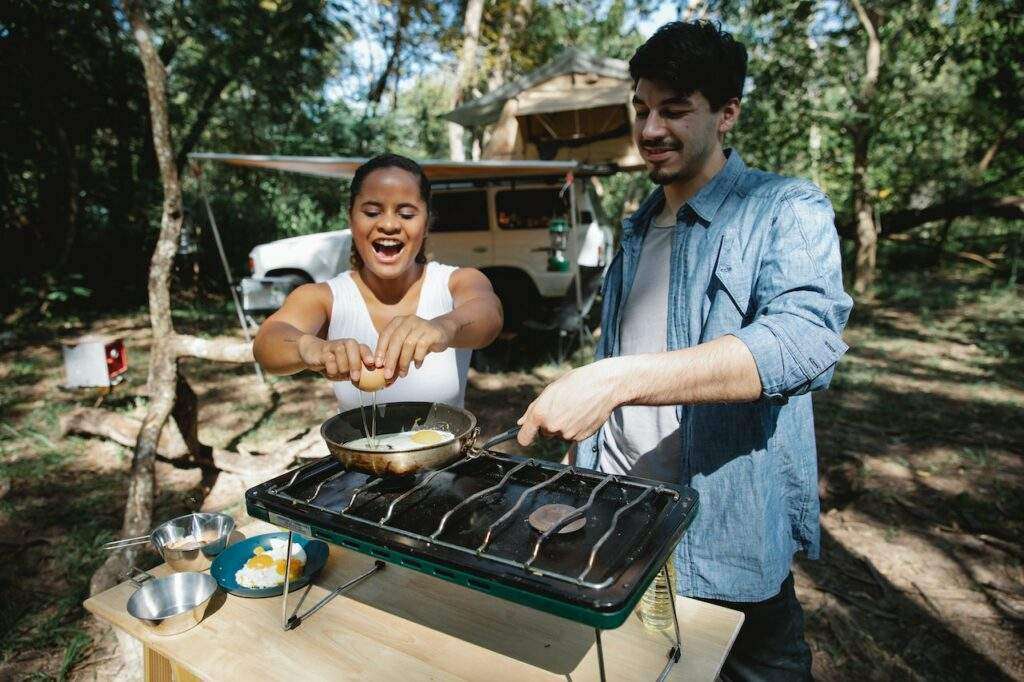
Choosing the right material for outdoor cooking equipment is crucial for several reasons. The material can impact the cookware’s durability, weight, and ability to withstand high heat. It can also affect the taste of your food. Additionally, the material can impact the cookware’s ease of cleaning and maintenance.
Considering these factors will help you select a set of camping cookware that is well-suited to your needs, allowing you to enjoy delicious, healthy meals while on your outdoor adventures.
Here’s a closer look at the best materials for camping cookware so you can decide what to bring to your next camping trip.
1. Stainless steel
Stainless steel is widely used in outdoor cooking equipment because of its long lifespan and resistance to rust and corrosion. It’s perfect for cooking a wide range of dishes because it doesn’t react to acidic foods and can endure high temperatures. And if you take good care of it, stainless steel will last decades.
2. Aluminum
Aluminum is another common choice for camping cookware due to its lightweight and high thermal conductivity. It’s cheap and convenient, but it scratches easily and reacts badly to acidic meals, leaving a metallic aftertaste to your food. Warping can also occur in aluminum cookware if it is exposed to high heat for too long.
3. Cast iron
Consider bringing a cast iron pan to your next camping trip. Cast iron cookware is incredibly durable and can withstand high heat. Furthermore, it enhances the nutritional value of food by including iron, a mineral vital to human health.
However, cast iron, especially if it has not been well seasoned, can be challenging to clean. It is also very heavy and may be hard to pack and carry.
4. Titanium
Titanium is a lightweight option famous for being durable. It is also non-reactive, so it won’t affect the taste of your food. However, it is also one of the more expensive materials for camping cookware. Additionally, titanium cookware is often less heat-responsive than other materials, making it less suitable for high-heat cooking.
5. Ceramic
Ceramics is a fantastic choice if you’re seeking eco-friendly and non-toxic cookware. Because it disperses heat well, it’s also ideal for low and slow preparations. Although it is beautiful, it easily breaks and can be rather hefty, making it less ideal for travel by backpack.
6. Non-stick coatings
Non-stick coatings are available on many camping cookware sets, simplifying food preparation and cleanup. However, these finishes aren’t great for high-temperature cooking and can wear with time. Some non-stick coatings can be downright dangerous to your health and the environment if broken or subjected to extreme heat.
Wrapping up
The best material for camping cookware will determine by the specific requirements and tastes of the camper. When choosing camping cookware, consider criteria such as how much it weighs, how long it will last, how it will react to heat, and how Eco-friendly it is. If you have the correct gear, you’ll be able to cook up some tasty and nutritious meals while you’re out enjoying the great outdoors with your family and friends.